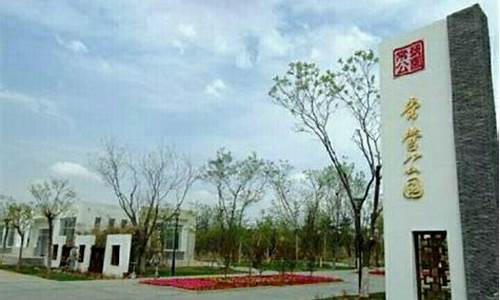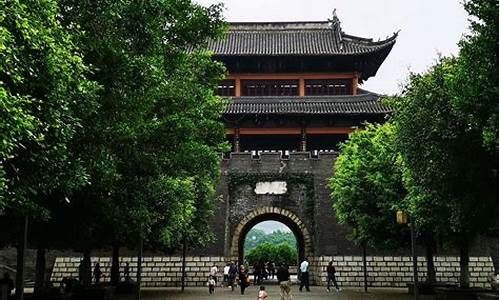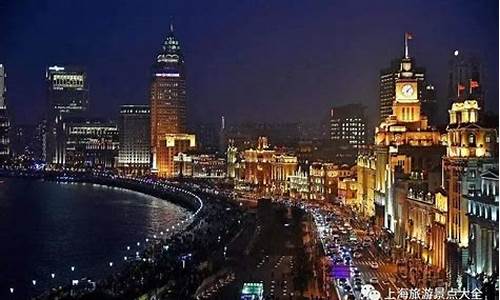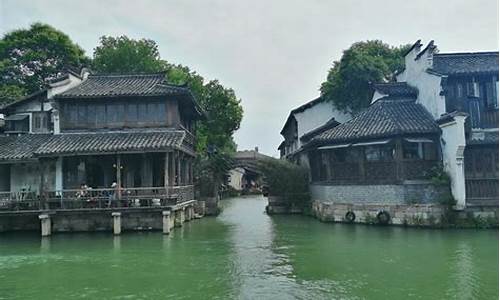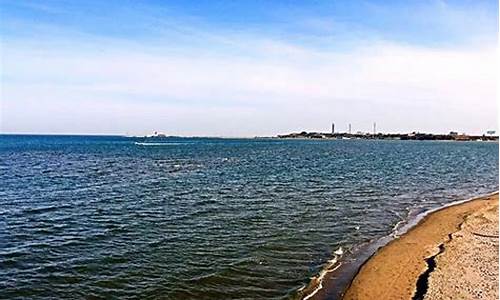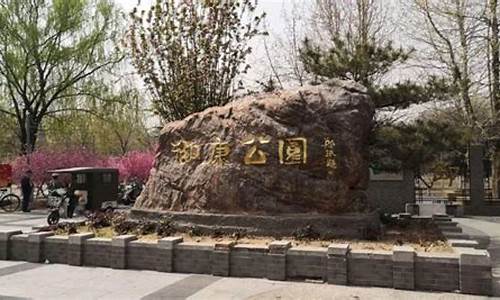旧金山旅游攻略英文全称,旧金山旅游攻略介绍
1.旧金山的英文怎么说
2.旧金山怎么说
3.旧金山用英语怎么读
4.美国旧金山英文名
5.旧金山的英语
6.介绍旧金山[San Francisco]的英文短篇

旧金山旧全山旧金山用英语这么说歌名为《San Francisco》。
San Francisco是旧金山在英语中的正式表达方式。"San"是西班牙语的冠词吵空,意为"圣",而"Francisco"指的是的圣弗朗西斯科,是旧金山城市的命名源于西班牙殖民者对圣弗朗西斯科的崇敬。旧金山(San Francisco)是美国加利福尼亚州的一座重要城市,位于旧金山半岛的北部。
它是美国最古老且最具文化和经济影响力的城市之一,以其美丽的风景、怀旧的建筑、多样的文化和创新的技术闻名于世。作为加州的代表性城市,旧金山吸引了游客和移民充满好奇心的目光。这座城市以其陡峭的丘陵、金门大桥、海湾和著名的中国城而著名。此外,旧金山还是科技、金融、文化和艺术的中心之一,在世界范围内享有盛誉。
探索旧金山的魅力和特色
旧金山独特的建筑风格反映了它的过去,如怀旧的电车、维多利亚风格的住宅和怀旧的海滩。与此同时,旧金山也是科技和创新的中心,拥有众多的科技公司和高科技企业。旧金山的自然美景令人叹为观止,包括金门大桥、海湾、艾尔卡特大道和高高耸立的丘陵等。这些景观为城市增添了独升碰瞎特的魅力,吵老使游客和居民都能够欣赏到美丽的自然景观。
旧金山以其多元文化而闻名,尤其是著名的中国城。在这个地区,游客可以品尝到各种美食、参观各种文化场所,并体验到不同文化间的交融。旧金山拥有众多博物馆、艺术画廊、剧院和音乐场所,艺术和文化氛围浓厚。每年都有许多文化活动和艺术节庆典,吸引了来自世界各地的艺术家和观众。
总结起来,旧金山是一个独特而魅力的城市,以其美丽的风景、怀旧的建筑、多元的文化和创新的技术而闻名于世。探索旧金山意味着发现其独特之处,体验自然之美、多元文化、艺术和美食。无论是居住还是旅游,旧金山都能给人留下深刻的印象,并成为一次难忘的体验。
旧金山的英文怎么说
1、好莱坞环球影城(英文名:Universal Studios Hollywood)
好莱坞环球影城位于洛杉矶市区西北郊,是游客到洛杉矶的必游之地。好莱坞是世界著名的影城,20世纪初,一些制片商开始在这里拍片,到1928年已形成了以派拉蒙等八大影片公司为首的强大阵容。
2、金门大桥(英文名:Golden Gate Bridge)
金门大桥桥身全长1900多米,历时4年,利用10万多吨钢材,耗资达3550万美元建成,由桥梁工程师约瑟夫·斯特劳斯(Joseph .Struss, 1870—1938年)设计,峙于美国加利福尼亚州旧金山金门海峡之上,是世界著名的桥梁之一。
3、自由女神像(英文名:Statue Of Liberty)
位于美国纽约海港内自由岛的哈德逊河口附近,其穿着古希腊风格服装,头戴光芒四射冠冕,七道尖芒象征七大洲;右手高举象征自由的火炬;脚下是打碎的手铐、脚镣和锁链,象征着挣脱暴政的约束和自由。
4、渔人码头(英文名:Fisherman'sWharf)
位于美国旧金山北部水域哥拉德利广场到35号码头一带,其概念来自于旧金山的渔人码头,那里原来是渔民出海捕鱼的港口,而在失去了码头功效后,经过商业包装,形成了有独具特色的休闲、文化地段。
5、军舰岛(英文名:Managaha Island)
位于美国北马里亚纳群岛自由联邦的塞班岛西侧中部外海小岛,在查莫洛语中,Mana-gaha指的是珍珠之意,在二次世界大战之后,被改叫「军舰岛」。
6、时代广场(英文名:Times Square)
是美国纽约市曼哈顿的一块繁华街区,被称为“世界的十字路口”,时报广场原名为朗埃克广场,后因《纽约时报》早期在此设立的总部大楼,因而更名为时报广场。时报广场是纽约市内唯一在规划法令内、要求业主必须悬挂亮眼宣传版的地区。
百度百科——好莱坞环球影城
百度百科——金门大桥
百度百科——自由女神像
百度百科——渔人码头
百度百科——军舰岛(北马里亚纳群岛邦岛屿)
百度百科——纽约时代广场
旧金山怎么说
旧金山的英文:San Francisco,读音:[sa:n fr?n'sisk?u]
拓展知识
旧金山(San Francisco),旧称“三藩市”、“圣弗朗西斯科”,美国加利福尼亚州太平洋沿岸的港口城市,是世界著名旅游胜地、加州人口第四大城市。旧金山临近世界著名技术产业区硅谷,是世界重要的技术研发基地之一和美国西海岸重要的金融中心,也是联合国的诞生地。
旧金山旅游景点
旧金山要塞公园
位于旧金山市的西北角,占地近1,500英亩,是18世纪时控制湾区的军事重地,目前还保存有古军方宿舍、炮台、医院、教练场等遗迹,供人凭吊。沿着海湾走,就抵达金门大桥旁的展望点,在这里立有一个金门大桥钢缆断面的标本,供游客参观。
钢缆的直径达36又3/4英寸(92.4公分),金门大桥全长4,200英尺(1,280公分),全靠南、北各一个桥墩及钢缆支撑,曾是世界第一长吊桥,并被视为工程界的奇迹。
柯伊特塔
柯伊特塔是旧金山的地标性圆柱形建筑,矗立于先驱公园的电报山上,塔高36米,人们可以登至顶层,欣赏旧金山的美丽风光。柯伊特塔的投资人是当地知名的慈善家柯伊特女士,因为亲身经历了1906年旧金山大地震,目睹消防员舍己为人的感人精神而决意建造一座高塔,台阶上刻有那些逝去的消防员的名字,以铭记这些伟大的平凡人。
此外,为了让柯伊特塔显得更有观赏性,柯伊特女士召集了当地的20多位艺术家在塔内描绘壁画,大部分壁画都是在诉说着经济大萧条时期加州人民生活百态和社会动向,从而这些精美的画作也具有了深远的历史意义。
贝克海滩贝克海滩位于城寨区的西南边,是旧金山市内最受欢迎的海滩,沙质细腻洁净,阳光满溢的周末假期里,往往挤满散步、嬉水及日光浴的人潮。事实上,贝克滩长久以来即被公认是“湾区最适合日光浴的地方”。
在阳光拥抱及群山的围绕下,以宇宙穹苍为覆,裸体的让海浪拥抱身躯,让阳光恣意爬满全身,一圆不被束缚的感觉,这是一种与自然共鸣的悸动,也是一种回归到最初本性的喜悦。
而当温暖的夏日黄昏里,跳跃的营火映著波影闪动、曾经在嬉痞时代盛极一时的歌曲穿透海浪的冲击,混著烧柴香,忽远忽近地飘散在逐渐微凉的风中。海滩上方断崖处枝珂交错的松柏成林,密林中有1906年保存至今的95,000磅古董级加农炮台。
旧金山用英语怎么读
旧金山在英文中是San Francisco。
详细解释:
旧金山是美国加利福尼亚州的一个城市,位于旧金山半岛的北端,在太平洋东岸。它是加利福尼亚州最大的城市之一,也是美国西海岸最重要的城市之一。
旧金山以其多样化的文化、美丽的自然风光和独特的地理特点而闻名。它被誉为世界上最美丽的城市之一,著名的金门大桥、旧金山湾、阿拉米达山和市区的坡度陡峭的街道都是该市的标志性景点。
旧金山也是金融、商业和文化的中心之一。它拥有繁荣的高科技产业,吸引了许多科技公司的总部和创新中心。此外,旧金山还是艺术、音乐和文学的重要场所,拥有丰富的艺术机构、博物馆和音乐表演场所。
旧金山还以其独特的气候而著名。由于受到海洋影响,旧金山具有凉爽、多变的气候,经常出现浓雾弥漫的景象,这也是该市的一个鲜明特点。
总之,旧金山作为美国西海岸的重要城市,以其多样化的文化、壮丽的自然景观和独特的气候而闻名于世。
旧金山还拥有丰富的历史遗产和人文景观。在19世纪加利福尼亚淘金热时期,旧金山成为了西部最重要的港口城市,吸引了大量移民和商业投资。这一时期留下了许多保存完好的维多利亚式建筑,如阿拉莫广场和渔人码头,成为旅游者和摄影爱好者的热门景点。
此外,旧金山还以其悠久的华人历史而闻名。中国移民曾经在19世纪末到20世纪初来到旧金山参与建设铁路和淘金等事业,形成了一个独特的华人社区,如唐人街。旧金山的唐人街是美国最古老、最有名的华人社区之一,这里有许多中餐馆、纪念品店和传统庙宇,吸引着许多游客前来参观。
总之,旧金山是一个独特而充满活力的城市,拥有丰富的自然景观、多样化的文化和悠久的历史遗产。它以其独特的魅力吸引着来自世界各地的游客和居民,成为了一个令人向往的旅行目的地和宜居城市。
美国旧金山英文名
美国旧金山的英语是San Francisco。
例如我们说:旧金山是美国“通向东方的大门”,用英语说就是:San Francisco is generally known as the U.S.“gateway to the Orient”.
San Francisco又可以译为“三藩市”、“圣弗朗西斯科”,他是美国加利福尼亚州太平洋沿岸的港口城市,是世界著名旅游胜地、北加州的核心城市。
英语学习方法
1、英语基础
要想学好高三英语,英语基础是必须学好的,英语基础没有想象中的那么难,不管是单词还是句型、语法。
在高三复习的第一轮复习中,关于复习系会和语言点,一定要注意听,哪怕是一节课掌握几个短语也行,至于课后就自己拿起高中英语书,从单词背起,考英语一定要有词汇基础,否则什么都是白搭。
2、词典不离手
当在学习高三英语的时候,遇到不会的单词就要查,看到相近的单词分不清也得查明白,不要求自己一遍记住,就看一看给自己一个印象,大概一个单词你查五遍的时候就能记住了。
另外,一定要看英文解释!这个是避免完形填空选项中英语翻译发生歧义很有用的方法,希望能够帮助到大家。
3、英语语法
学习英语语法就像造房子,首先要把最基础的语法脉络理清,打好根基,之后就可以慢慢补充和拓展,让自己的英语知识点巩固起来。
旧金山的英语
San Francisco
n.
旧金山(美国加利福尼亚西部港市)
圣弗朗西斯科(即旧金山, 三藩市)(美国港市)
A city of western California on a peninsula between the Pacific Ocean andSan Francisco Bay, an inlet of the Pacific. A Spanish presidio and mission were founded here in 1776. The first settlement was known as Yerba Buena, and the name was changed to San Francisco after control of the town passed to the United States in 1846. Discovery of gold nearby in 1848 changed the city from a small community into a thriving boom town known for its lawlessness and bawdy amusements. The city was all but destroyed by a devastating earthquake and fire on April 18, 1906. Population, 723,959.
旧金山:美国加利福尼亚西部一半岛上的城市,位于太平洋与旧金山湾 (太平洋沿岸一海港)之间,1776年西班牙在此建立要塞和传道区。第一个殖民点被称为耶尔巴布埃那,1846年美国控制该城市后改名旧金山。1848年在附近地区发现了金矿,这使原来的小社区发展成为一个日益繁荣的城镇,以无法规约束且多猥亵的消遣方式而闻名。该城市在1906年4月18日的毁灭性大地震和火灾中几乎被摧毁。人口723,959
介绍旧金山[San Francisco]的英文短篇
旧金山的英语是san Francisco
例如我们说:旧金山是美国“通向东方的大门”,用英语说就是:San?Francisco?is?generally?known?as?the?U.S.?“?gateway?to?the?Orient”.
San Francisco又可以译为“三藩市”、“圣弗朗西斯科”,他是美国加利福尼亚州太平洋沿岸的港口城市,是世界著名旅游胜地、北加州的核心城市。
旧金山(San Francisco),又译“三藩市”、“圣弗朗西斯科”,美国加利福尼亚州太平洋沿岸的港口城市,是世界著名旅游胜地、加州人口第四大城市。旧金山临近世界著名技术产业区硅谷,是世界重要的技术研发基地之一和美国西海岸重要的金融中心,也是联合国的诞生地。
旧金山的历史
1848年1月24日,詹姆斯·威尔逊·马歌尔(James Wilson Marshall) 在美利坚河发现了黄金,加利福尼亚的掘金潮由此开始。人们从全美各地蜂拥而至,暴富的可能性令人疯狂。从工人、商人,服务生到农场主,各行各业的人丢下了家人和工作加入这场浪潮。
这一度甚至造成了加利福尼亚暂时性的劳动力短缺。到了1849年末,黄金的消息传到了世界的每一个角落,旧金山湾迎来又一波移民潮,来自世界各地的人们为了黄金财富来到这片土地并植根于此。1850年,加利福尼亚正式成为美国第31州。
黄金这一独有的资源禀赋,推动了旧金山湾区的早期发展。掘金潮带来了采金业、冶炼业的发展。加上海湾及港口这独有的优势,港口运输业也得到快速发展。
财富的快速积累,则推动了现代金融业发展:富国银行(Wells Fargo ank)和美国加州银行(the Bank of California)都是在这期间建立起来的。各色的皮肤,各式的着装,各样的语言,在同一片土地上共存。掘金潮为加州多样化的人口和开放繁荣的文化奠定了基石。
Room One: San Francisco in the New Century
The dawn of the twentieth century was a time of great hope and prosperity in Northern California. Everyone was looking forward to the new century that would surely be the greatest in the American West's very short history. Few looked backward to the Native American tales of movements of the earth, the fires that had destroyed San Francisco numerous times in mid-nineteenth century, and the destructive earthquakes of 1865 and 1868 in the Bay Area. There were a few muted warnings. A catalogue of prior earthquakes in California was published in 1898 by the Smithsonian Institution, but few libraries bothered to stock it.
The fire chief wanted a backup water system and the insurance industry thought it was "inevitable" that the city would again burn to the ground. Life went blithely on in the "queen city" of the West. With a population of 400,000, San Francisco was the largest city in California and the economic capital of the West. The buildings were the tallest, the restaurants the finest, the entertainment, the most risque, and the factories the most productive.
Not all were well off, however. One in three inhabitants were foreign born. Immigrants from southern Europe and Asia were swelling the population and providing cheap labor. On the evening of April 17, 1906 the greatest single display of visible wealth in the West adorned the audience assembled at the Grand Opera House on Mission Street to hear the Italian tenor Enrico Caruso sing.
The weather was unusually balmy. Carriages and a few belching automobiles arrived at the entrance and disgorged their passengers. The jewels sparkled. The fashionable, high-necked gowns were vibrant. The men traded jests in the foyer while smoking between acts. Supper was taken after the opera. A newspaper reporter trudging home in the early morning hours of Wednesday, April 18th noticed that the horses stabled at Powell and Mason Streets seemed unusually restless.
Grand Opera: The 1906 Season
San Francisco had long been a haven for creativity, as literature, photography, fine arts, and music all flourished there. The economic boom of the 1890s lent the bohemian city a gaiety that did not disappear at the turn of the century: With fortunes made and money flowing, wealthier San Franciscans turned their attention to culture. They were determined to refine their city's reputation and make it a recognized center for the arts. Their efforts were rewarded with the engagement of the Metropolitan Opera Company's production of Bizet's "Carmen." Staged the evening of April 17, 1906 at the Grand Opera House on Mission Street, "Carmen" was the most exciting cultural event of the season. The renowned tenor Enrico Caruso played the character of Don Jose; famed soprano Olive Fremstad was cast in the title role.
The Grand Opera House program for its 1906 season reflected the economic prosperity and high level of cultural interest prevalent in San Francisco at the time. Its cover is a stylish rendering of a couple in evening clothes, the woman in a long white dress and veil and the man in top hat and dress suit. The profusion of advertisements for material goods highlight the city's burgeoning consumer demands. Wealthy citizens had the funds, leisure, and inclination to don their best and patronize highbrow entertainment. Tickets to that evening's performance were expensive and difficult to find; their stubs marked both social standing and seat reservations
Wealth and the Wealthy
Mark Hopkins and Leland Stanford were one half of "The Big Four," industrial barons who made their fortunes through railroads (the other two members were Charles Crocker and Collis P. Huntington). During the 1870s, Stanford and Hopkins built enormous, ostentatious mansions on San Francisco's Nob Hill, a neighborhood dominated by the very rich. The two men personified San Francisco's easy-come economy, and they intended their houses as public monuments to their wealth and power. Completed in 1876, Stanford's residence consisted of 50 rooms and housed an art collection worth an estimated $2 million. Next door was the Hopkins home. Finished in 1878 after Hopkins' death, it was an artless melange of architectural styles that featured a profusion of spires, turrets, and other gingerbread details.
Stanford and Hopkins were both long dead by 1906, but their mansions remained as examples of the conspicuous consumption that colored San Francisco's already colorful reputation. On a more somber note, the buildings also symbolized the wide gap between social classes that only a great calamity could possibly narrow.
The Growth in Population
Due to increased foreign immigration and the rise of domestic industry, American cities experienced a population boom in the late 19th century. San Francisco was no exception. Its population had been increasing exponentially since the Gold Rush. There were less than 35,000 residents in 1852; by 1900, the US Census counted nearly 343,000. One of the leading factors of that growth was a steady stream of Chinese immigration during the latter half of the century. Not only did this phenomenon raise San Francisco's population, it inspired an anti-Chinese labor movement whose broad charges were illustrated by this lithograph.
Autographed by "C.M." and housed in the Bancroft Library's Robert Honeyman Collection, this piece used the "bird's-eye view" style common at the time. From a contrived vantagepoint on an unidentified hill, it shows San Francisco as caught in a triangle of Chinese immigration – Vancouver, BC being one point of entry, the docks of the Pacific Mail Steamship Co. the other. The city teems with Chinese who occupy all manner of industrial works, and across the sea looms the threat of China, illustrated as a sun-like visage with Chinese facial features and a queue. The message is clear: hundreds of miles of land and leagues of ocean were not barriers enough to thwart mass Chinese immigration. Moreover, it proved extremely popular, as the political movement culminated in the Chinese Exclusion Act of 1882. Yet the Chinese remained an integral part of the city's population and helped San Francisco to become the largest urban center in California.
Politics and Politicians
Large cities across America enjoyed strong-willed, if not nefarious, politicians. San Francisco enjoyed a different twist on this theme, a man behind the scenes. Of French and Jewish descent, Abraham Ruef was an intelligent, shrewd man who had been involved in politics for most of his adult life. He joined the Republican Party at the age of 21, but became disillusioned with the confines of formal party structure. Turning toward a more lucrative career as legal counsel for labor unions and other private clients, Ruef saw the advantage of matching politics with parallel enterprises. He established the Union Labor Party in 1901 and plucked Eugene Schmitz from the orchestra pit, successfully installing the former conductor as the head of a puppet city government.
Schmitz may have occupied the Mayor's seat, but Ruef was the real power behind the throne, directing his party to electoral victories in 1903 and 1905. Ruef and his followers declared that they stood for the common man against institutional elitism. Their opponents charged that the Union Labor Party meant graft and corruption. Yet as long as the city prospered, there seemed little Democratic and Republican leaders could do.
So Many Places to Stay!
San Francisco had been a destination since 1849 and the tradition continued during the following decades. Drawn to its beautiful location, climate, and economic opportunities, visitors and transplants alike flocked to the city. They often stayed in one of the beautiful high-rise hotels located downtown.
Opened in 1904 and named after the patron saint of San Francisco, the Hotel St. Francis was one of the city's newest buildings. With "an army of well-trained employees under chefs whose names are famous wherever Epicurus is revered," it catered to the whims of the wealthy traveler. According to this souvenir book, the St. Francis offered Tyrolean-themed cuisine, a 4000-volume library, and special tours of Chinatown, among other amenities. The opulence of the Union Square hotel reflected the city's prosperity on the eve of the earthquake and fire.
全部内容:(点击左边红色“Room One Contents”下面的部分一一阅读)
声明:本站所有文章资源内容,如无特殊说明或标注,均为采集网络资源。如若本站内容侵犯了原著者的合法权益,可联系本站删除。




